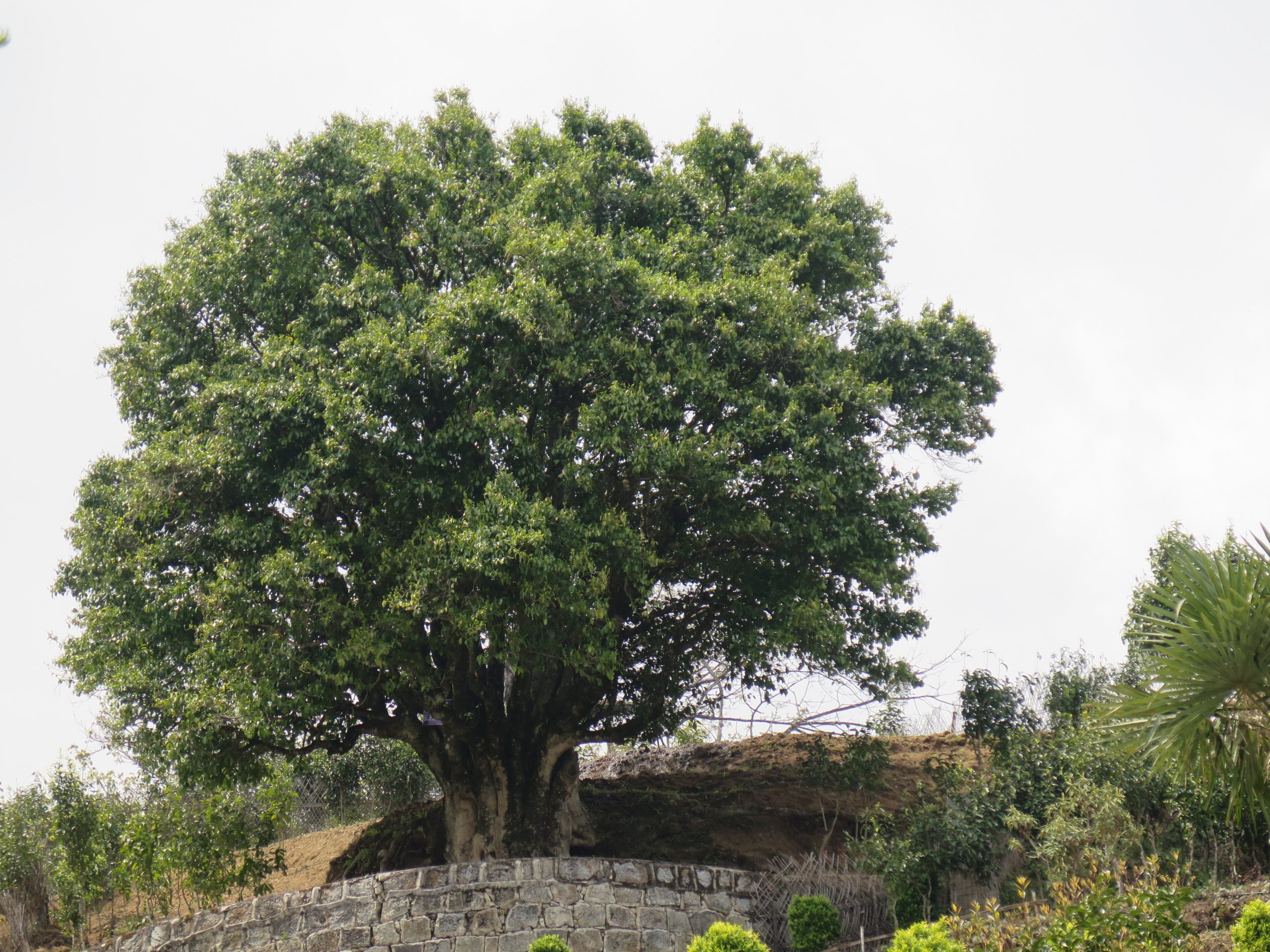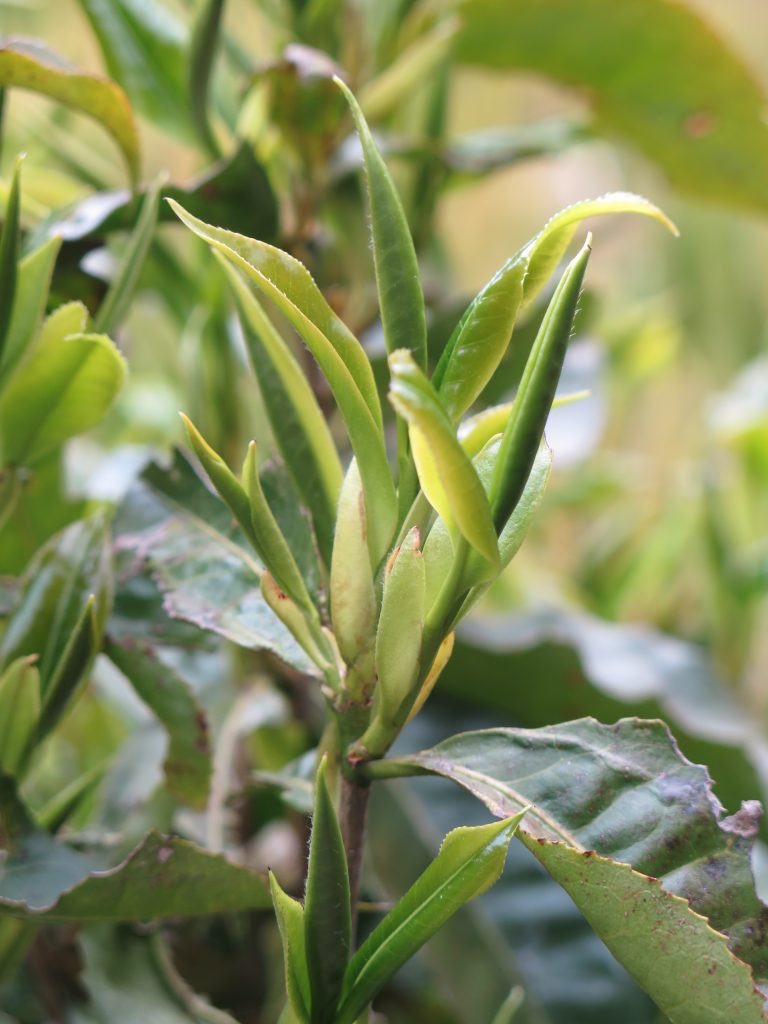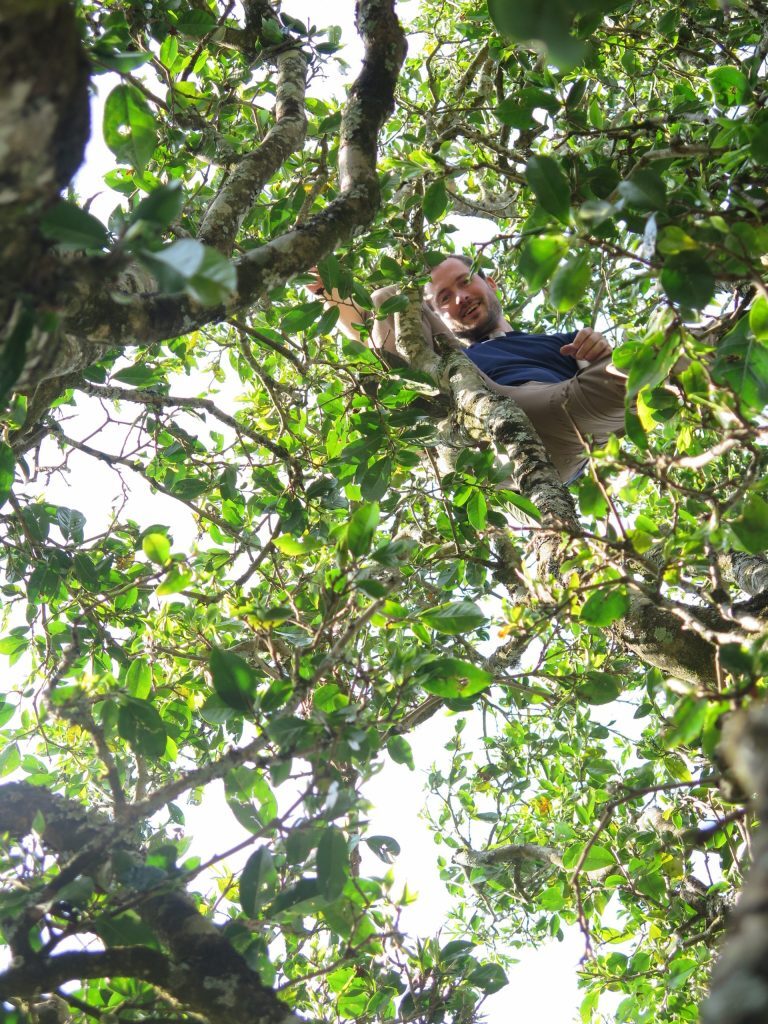On my journeys throughout China and particularly the Yunnan province (each spring from 2012 to 2019, except 2014), I have come across places with above hundred years old tea trees in the Xishuangbanna region, as well as a thousand and above years old tea trees in Baoshan and Lincang region. Now, I would like to share my experiences and the knowledge gained during my travels and from Chinese books.
Let’s take it from the very bottom. We can divided tea trees according to their way of spreading into generative varieties (you xingxi 有性系 / sexual) spreading naturally by seeds (also known as Quntizhong 群体种 which means colony/group variety), and into vegetative varieties (wu xingxi 无性系 / asexual) spreading by cuttings. Then we can devide tea trees according to their species into wild and common species.
The first group of old tea trees which I want to describe is called the Wild tea tree comm-unity, which are in Chinese commonly addressed as Yesheng chashu qunluo 野生茶树群落. The oldest tea tree from this community is Xiangzhuqing 香竹箐 (on the picture below). The species of this tree is not bearing the name of the Camellia Sinensis, but the Camellia Taliensis (after the name of Dali town). According to Chinese research made in 2010, this tea tree is 3200 years old and is also addressed as chazu 茶祖 the “tea ancestor”. This wild species of thousand years wild ancient tea trees, also refering as Qiannian yesheng gu chashu 千年野生古茶树 with a big trunk and crown, can be found in both sides all along the Lancang River in Baoshan, Lincang, Pu’er and Xishuangbanna region. The common mark of its leaves is a glossy texture without much hair and with quick oxidative properties, which is very suitable for producing Yesheng hongcha 野生红茶 – wild black tea. Some producers, however, produce also green Pu’er tea from its leaves, which can be of a very nice flowery taste, but much different to all Pu’er from the common big leaf variety. Local people from Mangshui town have another name for it – the Datang Hongku 大塘·红裤 – the “Red trousers from Big dike”. There also may be different wild tea trees, yet unknown to me – for example the Crassicolumna seems to be the same species just with different name.





The common species of old tea trees in Yunnan are addressed as the Big leaf variety group or the Daye cha pinzhong 大叶茶品种 in Chinese. In Latin, it is known as Camellia sinensis var. Assamica. These big leaf trees are divided into three sub-varieties bearing the names of their places of origin: Fengqing variety 凤庆种, Mengku variety 勐库种, Menghai variety 勐海种. These varieties differ in their trunk measurements, the height of the tree, the type of the tree crown, the shape and colour of its leaves, which are most suitable to produce Pu’er tea 普洱茶 and hongcha 红茶 – we know it as black tea.2
All these varieties has also different leaves material features, thus different processing approach, and the final tea can vary in its taste and oxidative properties. Therefore it can take a lifetime to fully comprehend the nuances of all these varieties and places. But speaking of tea from old tea trees, it is not merely about the old age of the tree, it is moreless about the vitality of the tree, the depth of its roots which are necessary for absorbing sufficient nutrients, which then can be reflected as a richness of substances in the tea. If we make a comparison of two teas from the same environment and different age, tea from ancient trees would be much more complex in taste and endure more steepings, but it would be less fragrant then the tea from small tea bushes. So sometimes it is also good to have a nice pu’er cake from younger tea trees, to be able to adjust ones recognition ability.
Here I add the desription of seven categories of tea trees in Yunnan province from the age perspective:
-
- Qiannian yesheng guchashu 千年野生古茶树
Thousand years wild ancient tea trees (before and around the Tang Dynasty 618-907, over 1,000 years old)
- Qiannian yesheng guchashu 千年野生古茶树
-
- Dachashu 大茶树 Big tea trees (500~1000 years old trees in Song Dynasty/ 960–1279)
-
- Yuanshengtai guchashu 原生态古茶树
Ancient tea trees of native habitats (300~500 years old tea trees cultivated around Ming Dynasty / 1368 – 1644)
- Yuanshengtai guchashu 原生态古茶树
-
- Shengtai guchashu 生态古茶树 Ecological ancient trees (100-200 years old trees, Qing Dynasty / 1644 – 1911)
-
- Lao chashu 老茶树 Old tea trees (60-100 years old trees, Republic of China 1912-1949)
-
- Xiao chashu 小茶树 Small tea trees (35-60 years old trees, PRC 1949-1976)
-
- Taidi chashu 台地茶树 Plantation tea trees (After 1976 up Today 0-35 years)3






Map:
Sources:
1. Book 解密软黄金 | 普洱茶品鉴;
2. Book 茶源地理 临沧 吴垠/主编 文/杨钰鸾手绘/袁潮燊
3. http://www.360doc.com/content/15/0204/23/16921388_446334007.shtml
4. https://www.puercn.com/puerchazs/peczs/10967.html 来源:普洱茶网 作者:isundust



